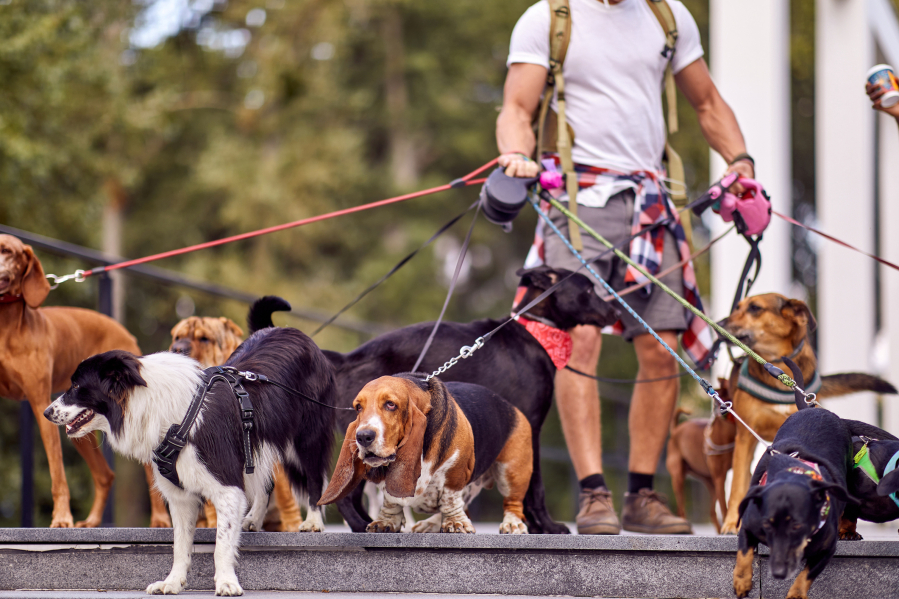Recent surveys show that the No. 1 preventative health issue in American dogs today is obesity. Managing the weight of our dogs can be just as difficult as managing our own, often because owners don’t recognize or are unable to admit that their pets are overweight.
Fitness is important for people and their dogs, and lack of fitness can lead to a list of medical problems like diabetes or worsening of osteoarthritis. It can even be a factor in the development of certain cancers.
The best person to objectively asses your dog is your veterinarian. They weigh your dog every visit and can compare the weight gain between appointments. They can also properly evaluate your dog’s condition comparative to their age, breed and sex (intact vs. altered) and see if any underlying condition is causing the weight gain or weight loss. They can help you determine your dog’s ideal weight and how to get there.
People often use food to bond with their dogs, giving them table scraps or treats as rewards, but many of these are high in sugar or calories. This can make the difference between a dog maintaining and gaining weight. Try substituting treats for a walk or playing with your pup to show affection.
The American Kennel Club offers these tips to help maintain your dog’s weight:
Managing, preventing weight gain
Read dog food labels. Know the top four ingredients of the food you are giving your dog. Make sure that you know how many calories are in 1 cup of the food that you are feeding them, and look for low-calorie options.
Measure your dog’s food. Purchase a separate set or two of measuring cups and spoons specifically for your dog’s food and/or supplements. Several pet food manufacturers provide daily feeding ranges. Most of the time, people aim for the middle or top of the range, but we should be aiming for lower. Measuring and reducing your dog’s food intake is the best way to start helping them lose weight.
Restrict treats. Either eliminate them altogether or replace high-fat/high-calorie treats with things like raw carrots, string beans, blackberries or bananas, all cut into small pieces. If your dog is diabetic, avoid bananas, as they are high in sugar. Always consider the amount and size of a treat to fit your dog’s specific age, weight condition and underling medical issues.
Increase fiber. Canned pumpkin is a great starting point to introduce fiber into your dog’s diet. Start off with a small amount for small dogs, and work your way up to a tablespoon; for bigger dogs, try to work up to 2 tablespoons per day. You don’t want to give them too much, because that can cause diarrhea.
Increase physical activity. Start by slowly increasing your dog’s physical activity, and increase your minutes every week. Try for 15-minute power walks five days a week — chances are your dog will look and feel better, and you will too!
Walking is the most recommended form of exercise by both physicians and veterinarians. It improves muscular strength, circulation and memory; promotes weight loss; increases energy; and reduces stress.
AKC FIT DOG Program
One of the newer American Kennel Club programs is the successful AKC FIT DOG program. It is an introductory-level incentive program that rewards owners and their dogs who reach specific fitness goals to bring health benefits to both. The AKC FIT DOG program adopted the American Heart Association’s recommendation for 30 to 40 minutes of walking per day, which totals 150 minutes per week.
For more information on responsible dog ownership, visit the American Kennel Club at www.akc.org.



